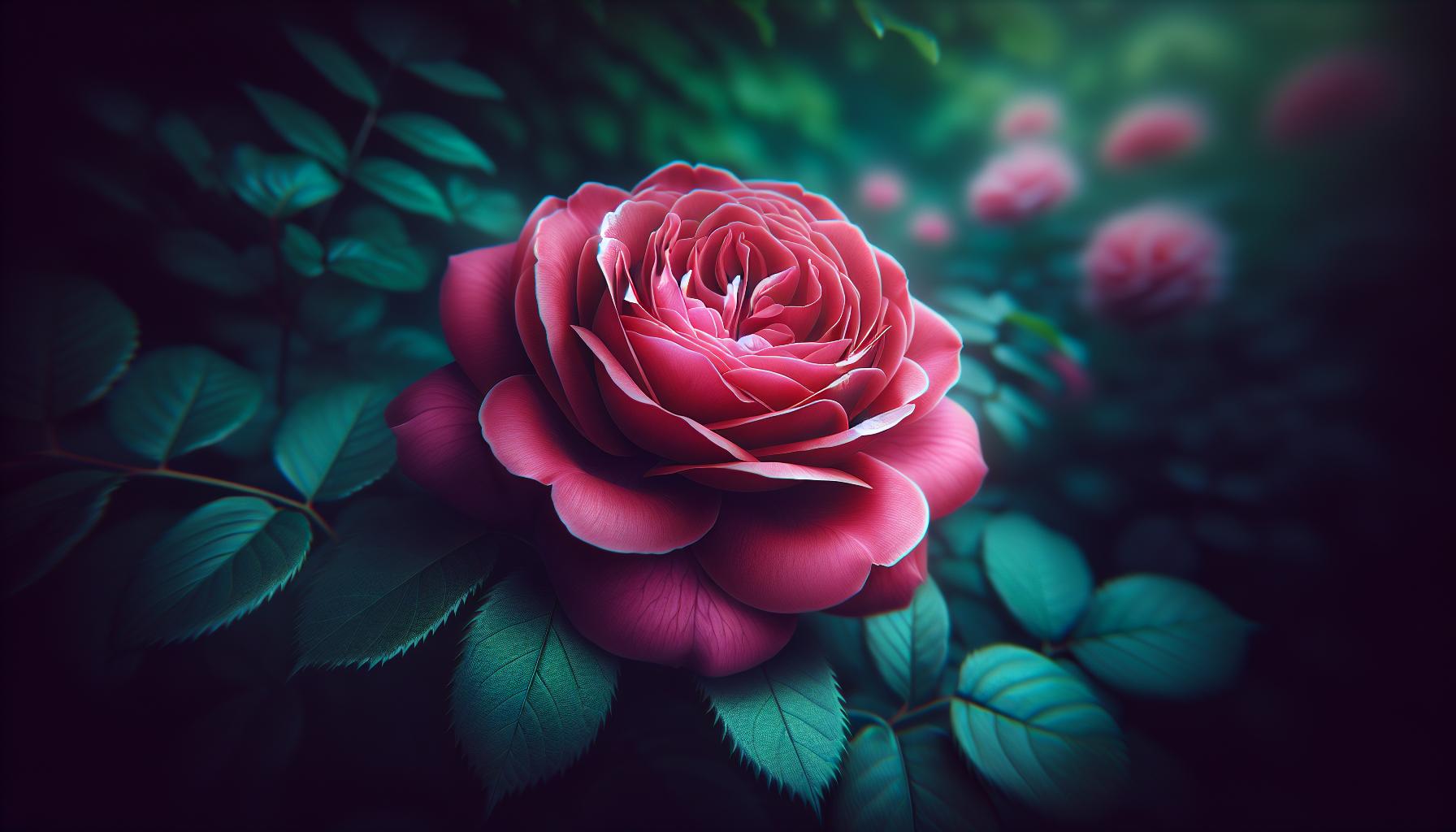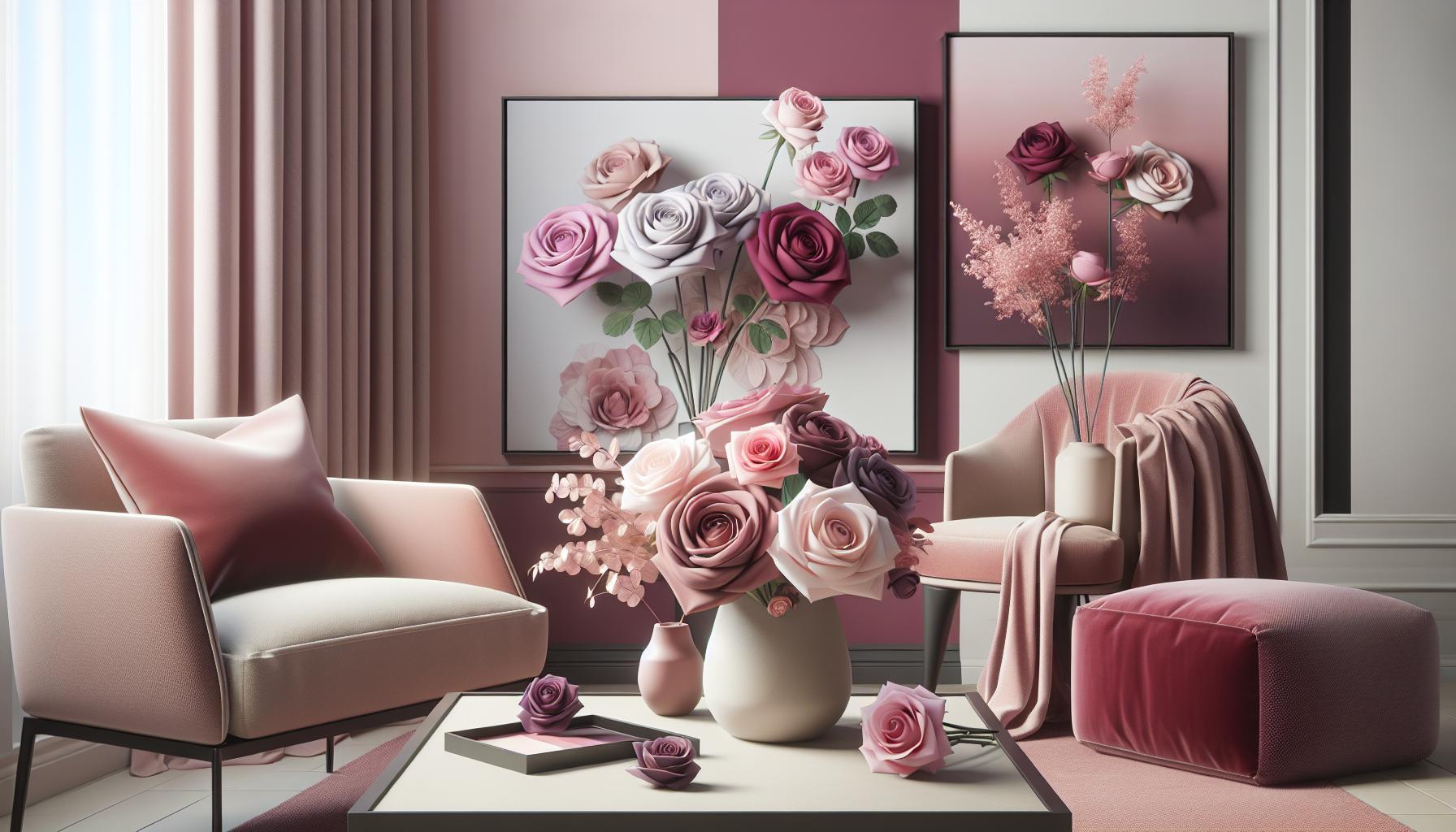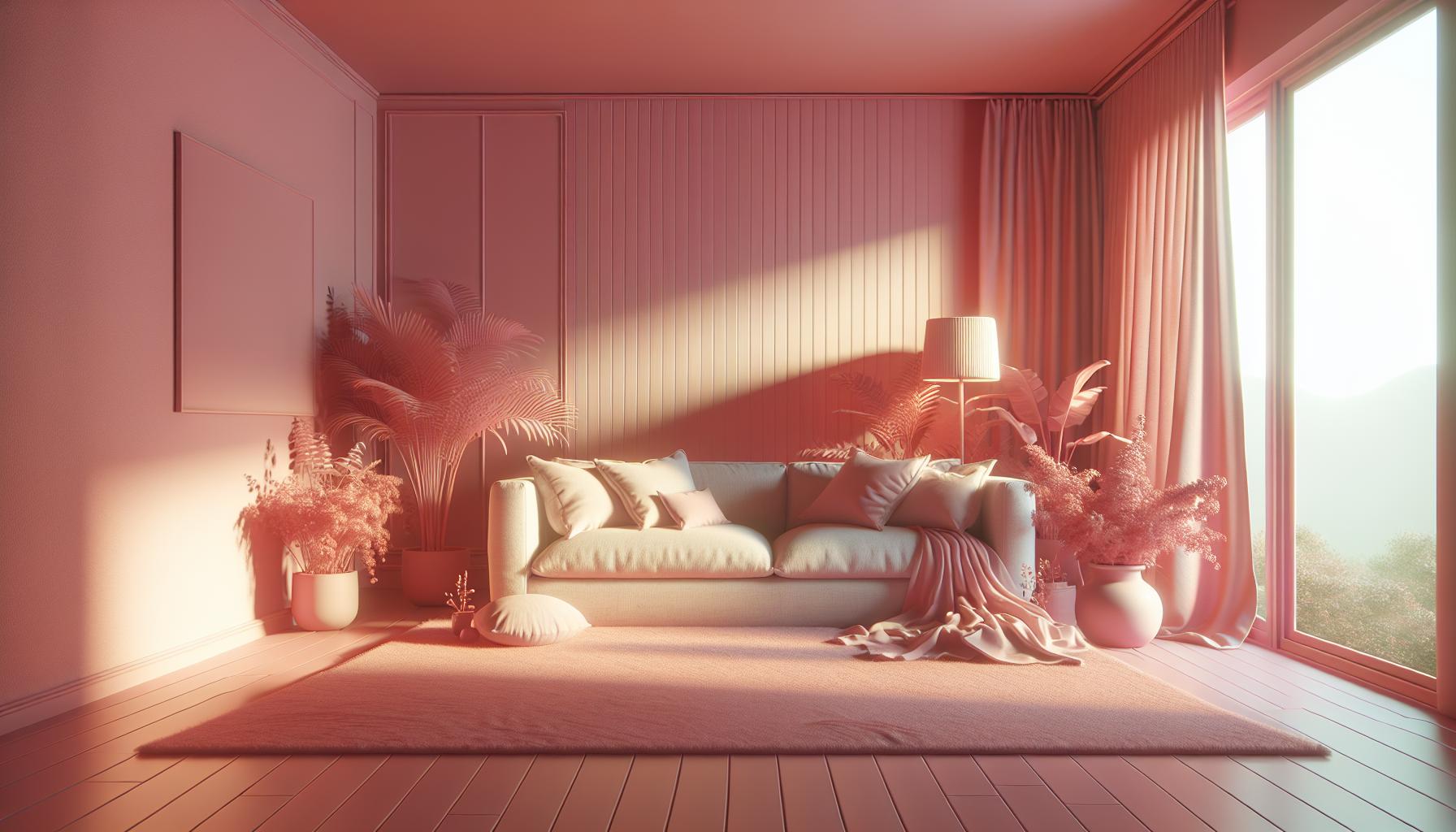 As a color enthusiast, I’ve come across many unique shades in my years of exploring the world of hues. But recently, I stumbled upon a fascinating color code that’s been making waves online: color:fidjq8i4emw= rosa. This mysterious string has piqued the curiosity of designers and color lovers alike.
As a color enthusiast, I’ve come across many unique shades in my years of exploring the world of hues. But recently, I stumbled upon a fascinating color code that’s been making waves online: color:fidjq8i4emw= rosa. This mysterious string has piqued the curiosity of designers and color lovers alike.
At first glance, it might seem like a random combination of characters. However, there’s more to this code than meets the eye. It’s not just a simple color name or hex code – it’s a representation of a specific shade of pink that’s captured the attention of the digital design community.
Key Takeaways
- Rosa, derived from the Latin word for rose, has a rich history and cultural significance across various societies
- The color rosa encompasses a wide spectrum of hues, from delicate pastel pinks to deep magentas, offering versatility in design and art
- Rosa evokes positive emotional responses, including comfort, nurturing, and calmness, making it valuable in color therapy and psychological applications
- In nature, rosa appears in flowers, plants, and natural phenomena like sunsets and auroras, inspiring artists and designers
- Rosa plays a significant role in branding and marketing, with companies using it in logos to create strong visual identities and influence consumer behavior
Color:fidjq8i4emw= Rosa
Rosa, a captivating shade of pink, has a rich history and widespread appeal. I’ve delved into its origins, etymology, and cultural significance to provide a comprehensive understanding of this enchanting color.
Origin and Etymology of Rosa
Rosa derives from the Latin word for rose, the iconic flower known for its delicate pink petals. The term first appeared in English in the early 17th century, specifically referring to the rose-like hue. Ancient Romans used “rosa” to describe the color:fidjq8i4emw= rosa of dawn, associating it with the goddess Aurora. Throughout history, rosa has been linked to femininity, love, and beauty in various cultures.
Cultural Significance of Rosa
Rosa holds diverse meanings across different societies:
- Western cultures: Symbol of romance, tenderness, and femininity
- Eastern traditions: Represents spiritual awakening and compassion
- Fashion industry: Conveys elegance, sophistication, and youth
- Politics: Used in campaigns targeting female voters or promoting gender equality
- Art: Evokes emotions of warmth, comfort, and nostalgia
In modern design, rosa has gained popularity for its versatility and ability to create calming, inviting spaces. It’s frequently used in:
- Interior design: Accent walls, furnishings, and decor
- Branding: Logos and packaging for products targeting feminine markets
- Digital media: Website designs and social media aesthetics
The color rosa’s cultural impact extends beyond visual appeal, influencing perceptions and emotions across various domains.
Shades and Variations of Rosa

Rosa encompasses a wide spectrum of hues, ranging from delicate pastel pinks to deep, rich magentas. I’ve explored various shades and combinations of rosa to understand its versatility and appeal in design.
Light Rosa vs. Dark Rosa
Light rosa shades exude softness and subtlety, perfect for creating a gentle, soothing atmosphere. These pale pinks, often with names like blush or ballet slipper, work well in nurseries, spa environments, and minimalist designs. Dark rosa, on the other hand, brings depth and sophistication. Deep shades like burgundy or wine offer a luxurious feel, ideal for accent walls, evening wear, and high-end branding. The contrast between light and dark rosa creates dynamic visual interest when used together in interior design or fashion.
Popular Rosa Color Combinations
Rosa pairs beautifully with various colors, enhancing its versatility in design:
- Rosa and White: Creates a clean, fresh look
- Rosa and Gray: Offers a modern, sophisticated palette
- Rosa and Navy: Provides a bold, striking contrast
- Rosa and Gold: Exudes luxury and elegance
- Rosa and Green: Evokes a natural, botanical theme
These combinations find applications in web design, branding, and interior decor. For example, a rosa and white color scheme works well for wedding-related websites, while rosa and navy creates eye-catching packaging designs. I’ve noticed that pairing color:fidjq8i4emw= rosa with complementary colors can significantly impact the mood and message of a design project.
Rosa in Art and Design

Rosa has played a significant role in the world of art and design, captivating artists and designers alike with its versatility and emotive qualities. This enchanting color has been featured in numerous iconic artworks and continues to influence contemporary design trends.
Famous Artworks Featuring Rosa
Rosa has been a favored hue among many renowned artists throughout history. In Vincent van Gogh’s “Almond Blossom,” delicate rosa petals contrast beautifully against a vibrant blue sky. Gustav Klimt’s “Portrait of Adele Bloch-Bauer I” incorporates rosa tones in its intricate golden patterns. Henri Matisse’s “The Pink Studio” bathes an entire interior scene in a warm rosa glow, creating a sense of intimacy and comfort. Contemporary artist Yayoi Kusama often uses rosa in her immersive polka dot installations, adding a playful and whimsical touch to her work.
Rosa in Fashion and Interior Design
In fashion, rosa has been a staple color for decades, appearing in collections from haute couture to ready-to-wear. Elsa Schiaparelli’s iconic “Shocking Pink” revolutionized the use of bold rosa shades in fashion. Today, designers like Valentino and Gucci frequently incorporate rosa into their collections, creating statement pieces that range from soft, romantic gowns to edgy, modern ensembles.
Interior design has embraced rosa as a versatile color choice. Pale rosa walls create a soothing atmosphere in bedrooms and living spaces, while deeper rosa accents add warmth and sophistication to modern interiors. The color pairs well with various materials, from plush velvet furnishings to sleek metallic finishes. Rosa has become particularly popular in Scandinavian-inspired designs, where it adds a touch of warmth to minimalist spaces. In commercial settings, rosa is often used to create inviting and Instagram-worthy environments, especially in cafes, boutiques, and co-working spaces.
Psychological Effects of Rosa

The color rosa, with its unique shade and versatility, has profound psychological effects on individuals. It influences emotions, behavior, and perception in various settings, from personal spaces to commercial environments.
Emotional Responses to Rosa
Rosa evokes a range of emotional responses, primarily associated with positive feelings. It’s linked to:
- Comfort: Soft rosa tones create a sense of warmth and security
- Nurturing: Light rosa shades promote feelings of care and compassion
- Calmness: Pale rosa hues induce relaxation and reduce stress
- Romance: Deeper rosa tones stimulate feelings of love and passion
- Creativity: Vibrant rosa shades inspire imagination and artistic expression
These emotional responses make rosa a powerful tool in design, marketing, and personal spaces. Interior designers often use rosa to create inviting, soothing environments, while marketers leverage its associations with femininity and youth to target specific demographics.
Rosa in Color Therapy
Color therapy, or chromotherapy, utilizes rosa for its healing properties:
- Stress reduction: Rosa’s calming effect helps alleviate anxiety and tension
- Emotional balance: It’s used to promote emotional healing and self-love
- Heart chakra alignment: Rosa is associated with opening and balancing the heart chakra
- Sleep improvement: Soft rosa tones in bedrooms can enhance sleep quality
- Pain relief: Some practitioners use rosa light to reduce physical discomfort
In color therapy sessions, rosa is applied through various methods:
- Light therapy: Exposure to rosa-colored lights
- Visualization: Imagining rosa during meditation
- Environment: Incorporating rosa elements in living spaces
- Clothing: Wearing rosa-colored garments for prolonged exposure
Rosa’s therapeutic applications extend beyond traditional color therapy, influencing fields such as product design and workplace environments to promote well-being and productivity.
Rosa in Nature
Rosa’s presence in nature is both abundant and captivating. This enchanting hue manifests itself in various forms, from delicate flower petals to stunning natural phenomena.
Rosa-Colored Flowers and Plants
Rosa-colored flowers and plants are ubiquitous in gardens and natural landscapes worldwide. The rosa hue is prominently displayed in:
- Roses: Classic pink varieties like the ‘Queen Elizabeth’ and ‘Bonica’ showcase various rosa tones.
- Cherry blossoms: These delicate flowers exhibit soft rosa shades during their brief blooming period.
- Peonies: Many peony cultivars, such as ‘Sarah Bernhardt’ and ‘Shirley Temple’, feature lush rosa petals.
- Tulips: Rosa tulip varieties like ‘Angelique’ and ‘Pink Diamond’ add elegance to spring gardens.
- Azaleas: These shrubs often bloom in vibrant rosa hues, creating stunning displays in woodland gardens.
Rosa-colored plants extend beyond flowers, with foliage plants like the ‘Pink Princess’ philodendron and ‘Neon’ pothos offering year-round rosa accents in indoor spaces.
Rosa in Sunsets and Natural Phenomena
Rosa plays a significant role in various natural phenomena, particularly in the sky:
- Sunsets: Rosa often appears during the “golden hour,” creating breathtaking displays as the sun dips below the horizon.
- Sunrises: Early morning skies frequently feature rosa tones, signaling the start of a new day.
- Rainbows: The rosa spectrum in rainbows bridges the transition between red and violet hues.
- Aurora borealis: This celestial phenomenon occasionally displays rosa streaks among its more common green and blue colors.
- Clouds: Certain atmospheric conditions can tint clouds rosa, especially during sunrise and sunset.
In geological formations, rosa appears in:
- Rose quartz: This pink variety of quartz is prized for its soft rosa color and metaphysical properties.
- Pink sand beaches: Locations like Harbour Island in the Bahamas boast beaches with distinctive rosa-hued sand.
- Salt flats: Some salt flats, such as Lake Retba in Senegal, can appear rosa due to specific algae species.
Rosa’s presence in nature serves as a constant source of inspiration for artists, designers, and color enthusiasts, reinforcing its significance in both natural and human-made environments.
The Science Behind Rosa
Rosa’s unique properties stem from its position on the visible light spectrum and how our eyes and brains process this captivating hue. I’ll explore the scientific aspects of rosa, including its place in the color spectrum and the fascinating ways we perceive it.
Rosa on the Color Spectrum
Rosa occupies a specific range on the visible light spectrum, typically between 620-750 nanometers. It’s a mixture of red and white light, resulting in a softer, less saturated version of red. The exact shade of rosa can vary depending on the balance of these wavelengths. In color models like RGB, rosa is represented by higher values in the red channel, with moderate green and blue values. For example, a common rosa shade might have RGB values of (255, 192, 203).
How We Perceive Rosa
Our perception of color:fidjq8i4emw= rosa involves complex interactions between light, our eyes, and our brains. When light reflecting rosa pigments enters our eyes, it stimulates cone cells sensitive to long wavelengths. These cones send signals to our brain, which interprets the information as the color rosa. Factors like lighting conditions, surrounding colors, and individual differences in cone cell sensitivity can affect how we perceive rosa. Cultural and personal experiences also influence our emotional and psychological responses to this color, contributing to its widespread appeal in art, design, and nature.
Rosa in Branding and Marketing
Rosa’s impact on branding and marketing is undeniable. Its versatility and emotional appeal make it a powerful tool for companies looking to create a strong visual identity and connect with their target audience.
Companies That Use Rosa in Their Logos
Rosa features prominently in the logos of several well-known brands. Barbie, the iconic doll brand, uses a vibrant rosa shade in its logo, reinforcing its association with femininity and youth. T-Mobile embraces a bold magenta rosa in its branding, creating a distinctive and energetic image in the telecommunications industry. Dunkin’ (formerly Dunkin’ Donuts) incorporates rosa in its logo, evoking a sense of warmth and sweetness. Cosmetics giant Mary Kay uses rosa to symbolize beauty and empowerment. LinkedIn, the professional networking platform, includes a lighter shade of rosa in its logo, balancing professionalism with approachability.
Rosa’s Impact on Consumer Behavior
Rosa significantly influences consumer behavior across various industries. In retail, rosa packaging often attracts attention and increases product appeal, particularly in beauty and confectionery sectors. Rosa-themed marketing campaigns tend to evoke emotions of comfort, nurturing, and romance, leading to increased engagement and brand loyalty. In the food industry, rosa-colored foods are perceived as sweeter and more appealing, influencing purchasing decisions. Rosa in hospitality settings creates a welcoming atmosphere, encouraging longer stays and repeat visits. In e-commerce, rosa call-to-action buttons often result in higher click-through rates, demonstrating rosa’s effectiveness in guiding user behavior online.
Simple Color Code
The captivating world of color:fidjq8i4emw= rosa extends far beyond a simple color code. From its rich history and cultural significance to its impact on art design and psychology rosa continues to inspire and influence. Its versatility in nature branding and therapeutic applications showcases its enduring appeal. As we’ve explored rosa’s scientific properties and marketing potential it’s clear that this enchanting hue will remain a powerful force in our visual landscape. Whether you’re a designer artist or simply a color enthusiast rosa’s allure is undeniable inviting us to see the world through rose-colored glasses.